
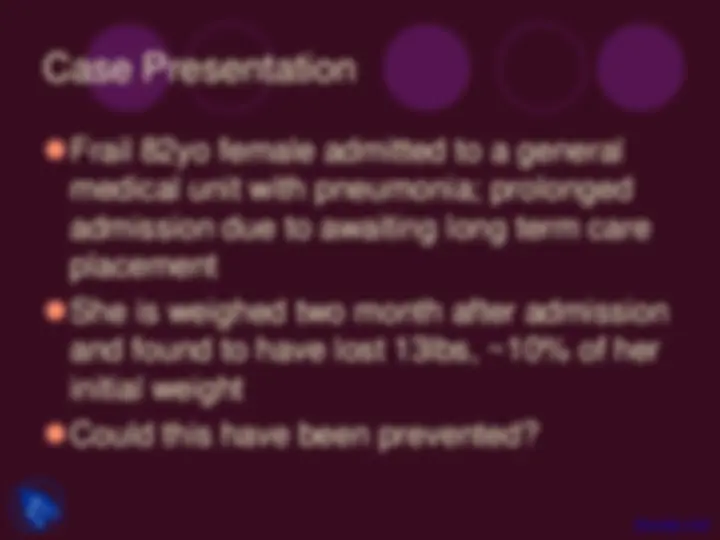
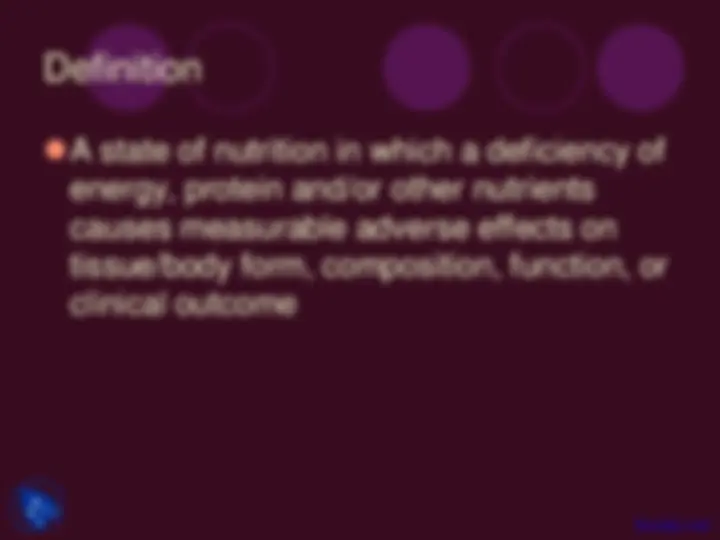
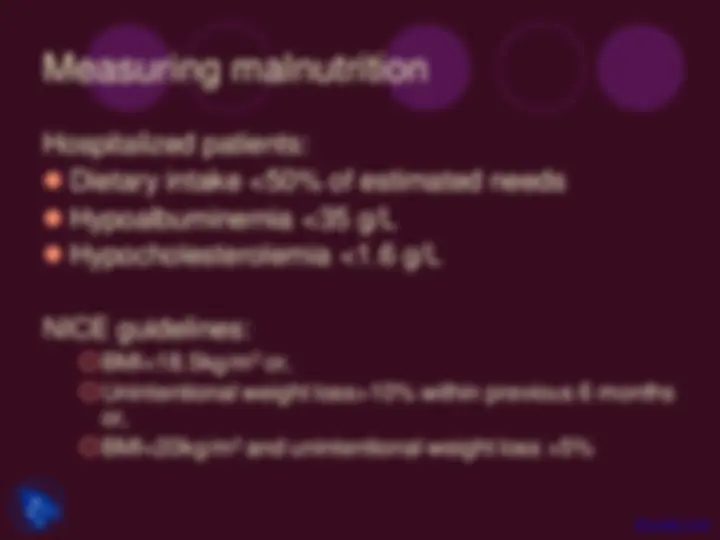
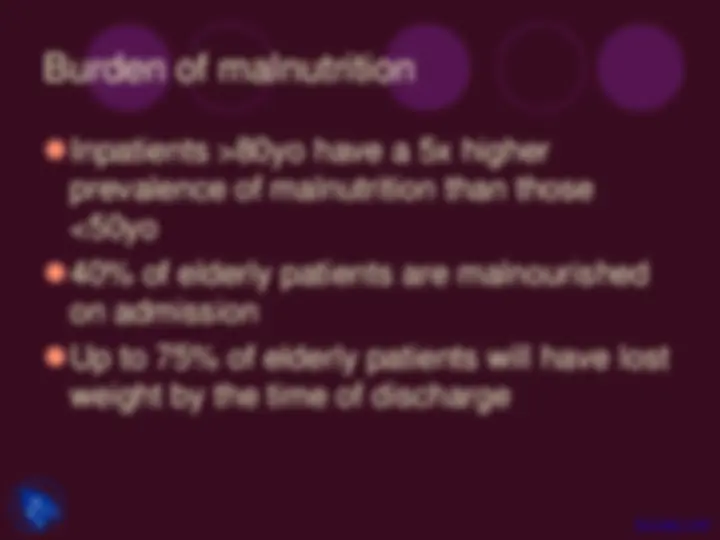
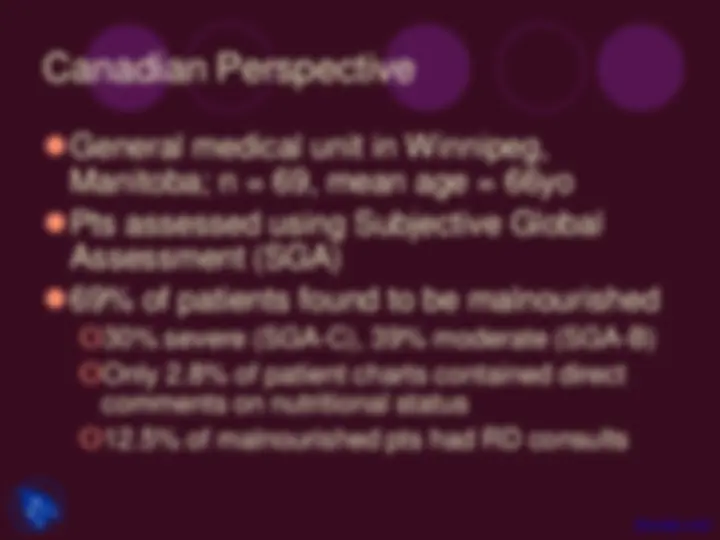
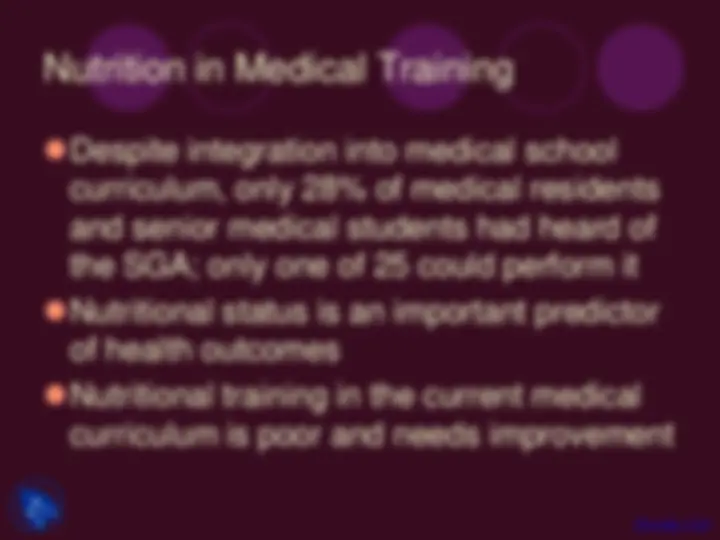
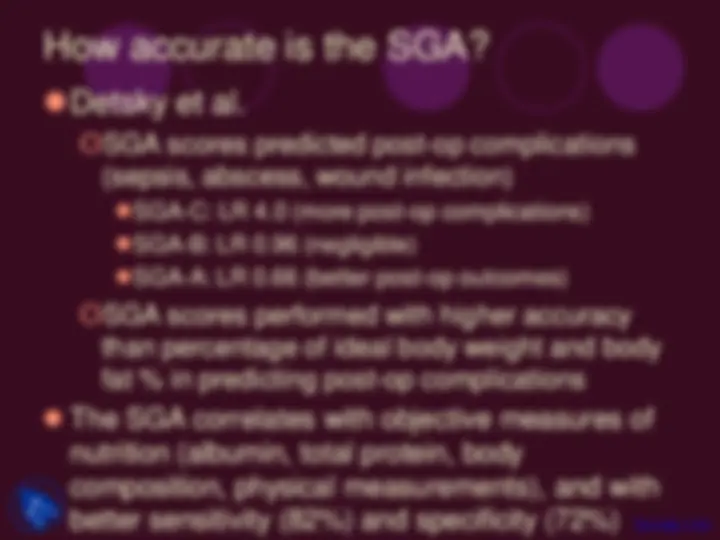
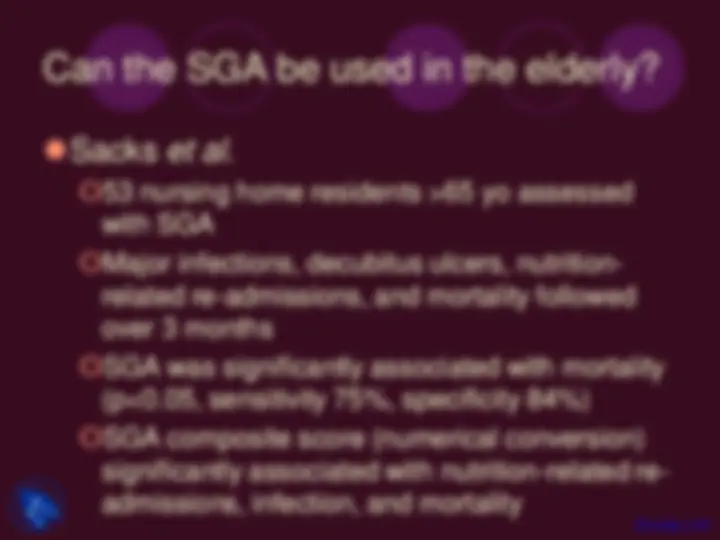
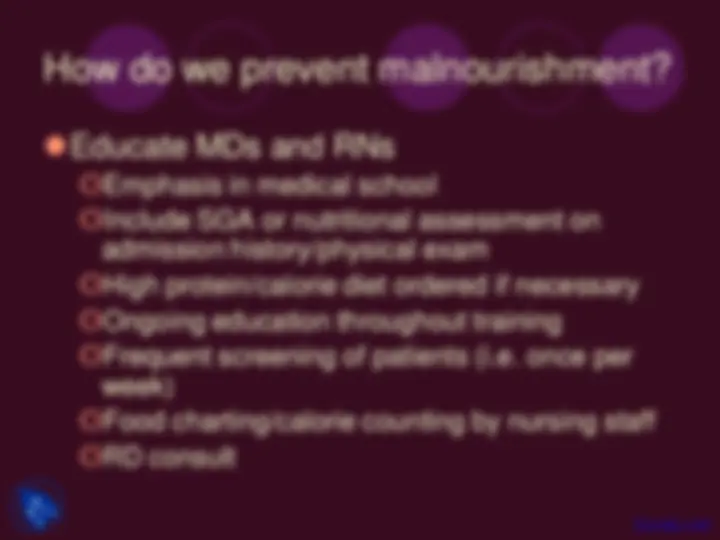
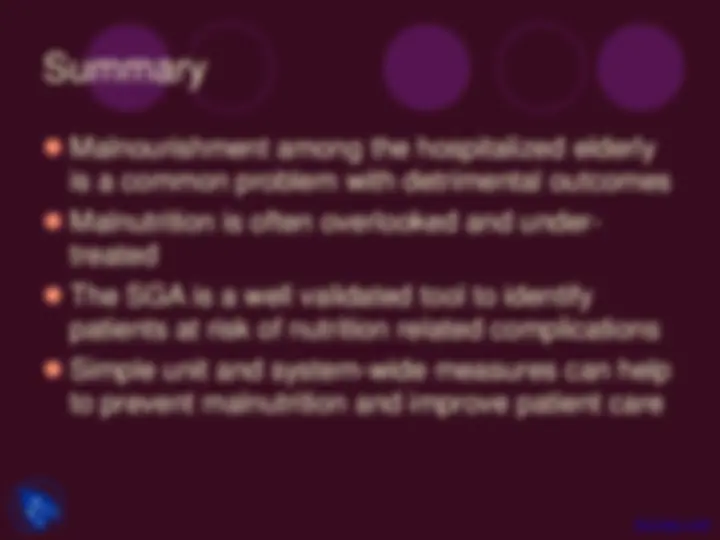


Study with the several resources on Docsity

Earn points by helping other students or get them with a premium plan


Prepare for your exams
Study with the several resources on Docsity

Earn points to download
Earn points by helping other students or get them with a premium plan
Community
Ask the community for help and clear up your study doubts
Discover the best universities in your country according to Docsity users
Free resources
Download our free guides on studying techniques, anxiety management strategies, and thesis advice from Docsity tutors
An in-depth analysis of malnourishment among elderly hospital patients, including its definition, measurement, consequences, and prevention strategies. The document also discusses the utility of the subjective global assessment (sga) tool and barriers to adequate nutrition in hospitals. It also includes case presentations and research findings on the accuracy and precision of the sga.
Typology: Slides
1 / 18

This page cannot be seen from the preview
Don't miss anything!











Malnourishment among elderly inpatients
Define malnourishment
Describe the burden and consequences of malnourishment in hospital
Understand the utility of the “Subjective Global Assessment” tool
Identify strategies to prevent a person from becoming malnourished in hospital
A state of nutrition in which a deficiency of energy, protein and/or other nutrients causes measurable adverse effects on tissue/body form, composition, function, or clinical outcome
Hospitalized patients: Dietary intake <50% of estimated needs Hypoalbuminemia <35 g/L Hypocholesterolemia <1.6 g/L
NICE guidelines: BMI<18.5kg/m 2 or, Unintentional weight loss>10% within previous 6 months or, BMI<20kg/m 2 and unintentional weight loss >5%
Vulnerability to infection
Delayed wound healing
Impaired respiratory function
Decreased muscle strength
Depression
Longer admissions
Increased overall healthcare costs
Higher complication rates
Increased mortality rates
Inpatients >80yo have a 5x higher prevalence of malnutrition than those <50yo
40% of elderly patients are malnourished on admission
Up to 75% of elderly patients will have lost weight by the time of discharge
Despite integration into medical school curriculum, only 28% of medical residents and senior medical students had heard of the SGA; only one of 25 could perform it
Nutritional status is an important predictor of health outcomes
Nutritional training in the current medical curriculum is poor and needs improvement
Weight change Dietary change GI symptoms Functional capacity Presence of disease Physical signs of malnutrition
Overall score derived from subjective combination of above findings A: well nourished B: moderately malnourished C: severely malnourished Docsity.com
Detsky et al.
SGA scores predicted post-op complications (sepsis, abscess, wound infection) SGA-C: LR 4.0 (more post-op complications) SGA-B: LR 0.96 (negligible) SGA-A: LR 0.66 (better post-op outcomes) SGA scores performed with higher accuracy than percentage of ideal body weight and body fat % in predicting post-op complications
The SGA correlates with objective measures of nutrition (albumin, total protein, body composition, physical measurements), and with better sensitivity (82%) and specificity (72%) Docsity.com
Sacks et al.
53 nursing home residents >65 yo assessed with SGA Major infections, decubitus ulcers, nutrition- related re-admissions, and mortality followed over 3 months SGA was significantly associated with mortality (p<0.05, sensitivity 75%, specificity 84%) SGA composite score (numerical conversion) significantly associated with nutrition-related re- admissions, infection, and mortality Docsity.com
Remove physical limitations
Ensure tray is within reach with food covers off Ensure patient is positioned appropriately and has glasses on/dentures in if necessary
Provide assistance
Encourage family members to assist with meals and selecting items from menu Involve volunteers Enhance socialization at mealtimes between patients Encourage pts to ask for snacks if hungry
System policies
Implementation of alert when pt NPO for longer than 24hrs for diagnostic imaging Schedule RN breaks around patient mealtimes to maximize staffing during meals Protected mealtimes if possible for patients at risk of malnourishment (e.g. no tests, etc.) Specialized utensils available